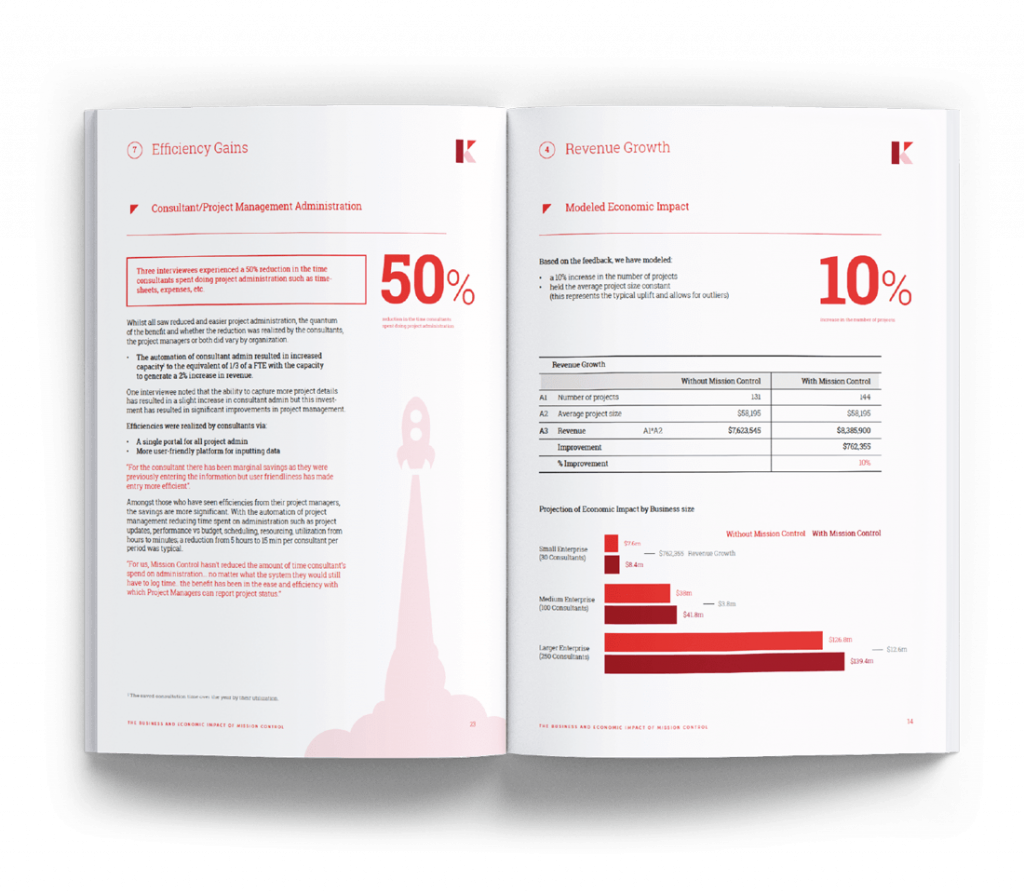Having a project management methodology in place that helps you plan, manage, and complete projects efficiently will see you play the true role of managing projects and not just fighting fires.
Of the many project management methodologies, the Projects IN Controlled Environments (PRINCE2) approach is one of the most versatile and widely implemented.
But what is PRINCE2 project management, and why is it so popular? And more importantly, why should you use it for your projects? To answer these questions, we go over the main components of the PRINCE2, which are:
- What PRINCE2 methodology is
- PRINCE2 principles
- PRINCE2 aspects
- PRINCE2 roles and responsibilities
- PRINCE2 processes
- How to implement it
Let’s get right to it!
The PRINCE2 Project Management Methodology
PRINCE2 is a project management methodology commonly used worldwide. It’s an outcome-based methodology designed to give project managers the greatest possible chance to run successful, profitable projects.
As a process-based methodology, PRINCE2 focuses on organization and control over the entire project, from start to finish. Resources and risks are managed by dividing projects into smaller stages, defining clear roles and responsibilities, and using seven processes to manage the project life cycle.
The PRINCE methodology was initially developed in 1989 by the Central Computer and Telecommunications Agency (CCTA) as a way for the U.K. government to manage I.T. projects. The methodology was later reviewed and updated by a team of project management specialists and public and private organizations to make it more widely applicable to various industries. Thus, the new and improved PRINCE2 was born in 1996.
Why Use PRINCE2 Project Management?
As a structured way to execute a project, PRINCE2 ensures that you meet the project goals logically and systematically. In addition to its relative simplicity, PRINCE2 has the following benefits:
1. Flexibility
If you’re already using project management software, you’ll appreciate that you don’t need yet another tool to run PRINCE2 projects. You can use it in conjunction with your existing software.
2. Built for uncertainty
PRINCE2 places a significant focus on continued business justification and risk management. This could be very beneficial to a business during uncertainties such as economic downturns and other pandemics.
3. Predictability
Because the PRINCE2 methodology breaks projects down into stages, you can closely monitor them using a step-by-step method from the beginning of the project up to its delivery. By doing so, you significantly reduce the chances of your projects spiraling out of control and keep them on track towards their intended goals.
4. Time and cost-effective
PRINCE2 standardizes every aspect of your projects, ensuring no chance of miscommunication or misdirection. With this kind of standardization, you don’t have to spend time and money training new employees already familiar with the PRINCE2 methodology.
Furthermore, you spend less time identifying risks as you’ll have outlined them at the beginning of the project. And, if an unexpected risk arises, you can deal with it sufficiently early as one project stage ends and the next begins.
5. It’s tried and tested
PRINCE2 methodology has been in use for over 30 years and is still one of the most popular project management methodologies among project managers in every business sector. If nothing else, this is proof of just how reliable this approach is. Whenever the method is revised, reviewers consider input from project management professionals from around the globe. This ensures that the methodology doesn’t stray from the wisdom of industry leaders.
The PRINCE2 Project Management Structure
The PRINCE2 project management structure includes seven principles, six aspects, 7-phase processes, and defined roles and responsibilities.
Let’s take a look at how to implement each one of these.
7 Principles
Seven principles form the framework for PRINCE2 methodology. Adhering to these principles ensures that PRINCE2’s best practice is incorporated efficiently. The principles are as follows:
1. Continued business justification
The first principle in PRINCE2 is that every project must clearly outline the need, customer, benefits, and cost assessment. This outline is done to make sure the project remains viable. If not, the project ends.
2. Learn from every project/stage
Every lesson from every project or stage is logged and used to inform new projects to avoid repeating past mistakes. The team refers to the lesson log throughout the project.
3. Clearly defined roles and responsibilities
When using the PRINCE2 methodology, the project manager should make sure that all roles are clearly defined and that everyone knows what they’re responsible for—and what their teammates are responsible for. A tool like Mission Control gives everyone visibility into everyone’s role and responsibilities by using an effective Kanban board.
4. Move in stages
PRINCE2 projects are planned and are broken down into individual work phases. The methodology demands that you record lessons and risks and update project plans before moving to the next stage. You must also confirm that the project is progressing according to the set time and budget.
5. Manage by exception
Senior executives typically establish baseline requirements for time, cost, risk, and scope. They then delegate daily management to the project manager. Should any issues arise that impact the established requirements, that’s an “exception.” The project manager should report the problem to the executives, who will decide the best way to proceed.
6. Focus on quality
Project managers must constantly check deliverables against the quality requirements to ensure that projects deliver the quality agreed from the start.
7. Tailor to suit each project
Adjust the PRINCE2 methodology to suit the needs of each project in terms of size, the number of people involved, work package delegation, and more.
PRINCE2 Aspects
The PRINCE2 methodology identifies six aspects or themes that project managers must manage in every project. These themes guide you on how to put the principles into practice. Let’s take a look at each:
- Business case: This theme helps determine the viability of a project, whether it’s deliverable or worthwhile.
- Organization: Use this theme to delegate and keep track of the roles and responsibilities of all teams and individuals.
- Quality: Ensures that the best quality product is delivered as was agreed.
- Plans: Acts as a roadmap for achieving targets at different stages during the project.
- Risk: This is a log that details any issues that may have arisen during the project. Risks could be negative (threats) or positive (opportunities).
- Change: This theme helps manage change by outlining any potential or approved changes to the baseline objectives. Each change must be agreed upon before it’s incorporated into the project.
- Progress: Helps to keep the project on track by comparing actual progress to planned progress. This way, you’re able to tell whether the project is on track or off the rails. A Gantt chart is one of the most effective ways of keeping tabs on how your actual project progress compares to the original plan.
PRINCE2 Roles & Responsibilities
To deliver the project according to the Prince2 methodology, you’ll need the following roles in your team:
- Project Manager: The role of the project manager involves allocating work, planning, ensuring the work is completed on time, communicating with the project board and customers, etc. There’s one main difference in the role of a PRINCE2 manager and a PM in other project management methodologies—the Prince2 PM reports on project status to a Project Board (customer, user, and supplier).
- Customer: This is a person or a company that pays for the project.
- User: This is a person or a company that uses the project’s outcome.
- Supplier (specialist): This is a subject matter expert who provides the knowledge needed to complete the project. They design or build the project outcome.
PRINCE2 7 Phase Process
The PRINCE2 project management uses a series of processes in a sequence that each project has to go through to deliver desired results.
These are the seven processes:
1. Start up the project
This phase involves determining if the project is viable. To do this, you must create a project brief, business case, and a detailed stage plan.
This phase is essential because it allows the business to do its due diligence before executing the project. Due diligence saves time and money once the project starts.
2. Direct the project
In the second phase, a project manager is assigned the project after determining its viability.
3. Initiate the project
Here’s where the project manager prepares a plan that clearly defines the project scope, costs, timescales, risk, quality, and benefits.
4. Control stages
Next, the project manager subdivides the project into stages and assigns teams for each stage. Then they track the performance and issues of each stage and report progress to the project board.
5. Manage product delivery
In this phase, your responsibility is to ensure that there is no gap between deliverables and quality expectations.
After the team completes the project, the board makes a final evaluation and either approves it or requests revisions.
6. Manage stage boundaries
At the closing of each stage, the project manager and the board must review the outcomes of that stage to ensure that the project is on the right track.
The project board then decides whether to continue to the next stage or abandon the project entirely if it’s no longer viable.
7. Close the project
The last phase is the project closing, which marks the outcomes’ conclusion, documentation, and reporting. This phase focuses on ensuring the project achieves its goals and objectives by the deadline.
Here’s is where you hand over the product, evaluate the project and recommend its closure to the project board to close it out officially.
How to Apply PRINCE2 Project Management
Selecting a suitable project management methodology is a big part of your job as a project manager. You want a process that focuses on managing projects and delivering them on time and within budget without compromising quality. As an outcome-based approach, this is precisely the main focus of the PRINCE2—to deliver high-quality projects on time and within budget.
By applying PRINCE2 to your project management, you’ll continuously follow project management best practices throughout the project and benefit immensely from improved project management.
It’s practically impossible to achieve successful projects without a high-quality team that includes everyone from the project board to individual team members. PRINCE2 empowers you to build better teams, whom to involve in projects and what their responsibilities are.
Ready to get started? By adapting the time-tested PRINCE2 methodology to a project management tool such as Mission Control, you’ll be better organized, have the right team by your side, and together, deliver projects on time within budget, according to quality expectations.
Request a demo for a real-time view of how Mission Control can help you organize and track your projects.





